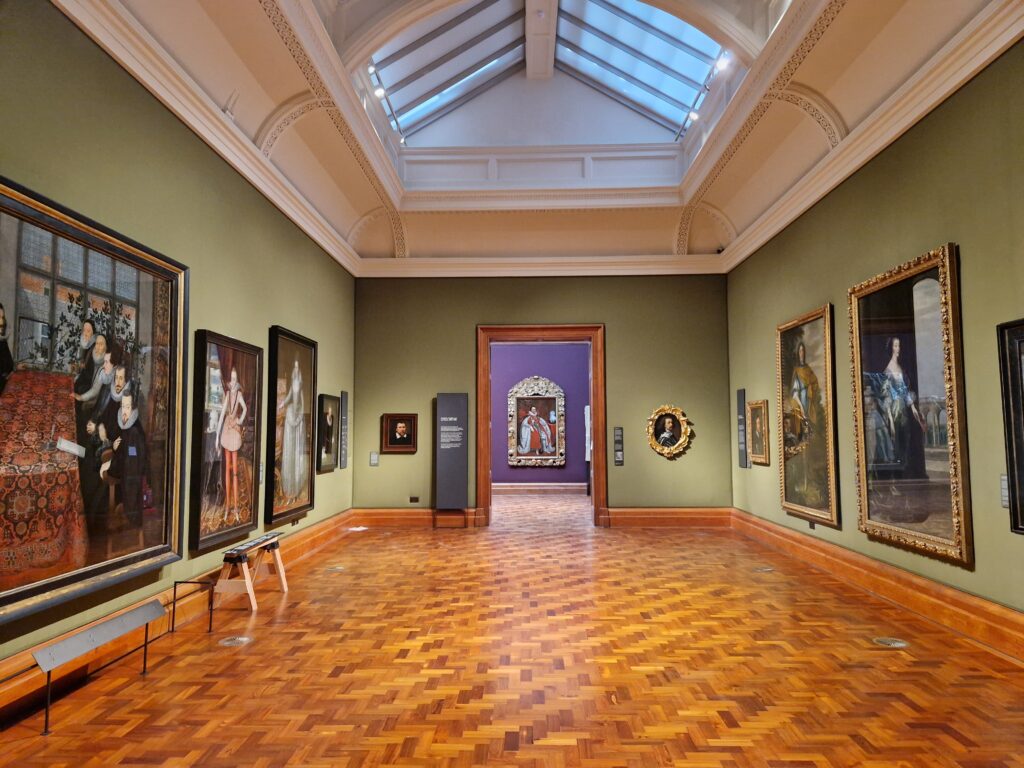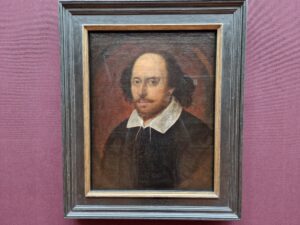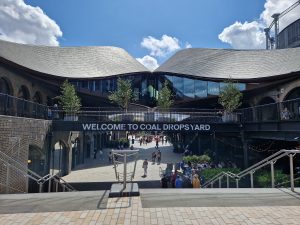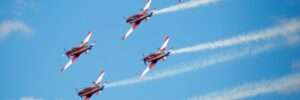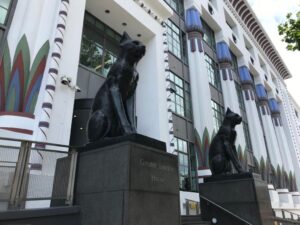The New National Portrait Gallery
On 22 June 2023, the National Portrait Gallery will reopen its doors to the public for the first time since March 2020. You will no doubt remember the closure of all public buildings for the first Covid-19 lockdown; the Gallery has been closed since then. What you may not realise is that this closure was, for the most part, planned. The Gallery had taken the decision to close for a three-year period to enable a full redevelopment of the site.
The Gallery opened in 1856 but in 1896 it moved to its first purpose-built premises on St Martin’s Lane on a site attached to the much larger National Gallery. The site was awkward in shape which meant that it was largely comprised of a north wing and an east wing making it largely L-shaped. The architect was Ewan Christian. Christian had been the Church Commissioner for 40 years and was well into his seventh decade when he got the commission. Christian had built over 90 new churches and, as late as 1896 opted not to use electricity. It’s worth remembering that the London underground was electrified in 1888. The National Portrait Gallery was going to be lit by daylight only; and only open during daylight hours. If it got too hot then one of the guards would open the window letting in not just air but Victorian London’s notorious air thick with coal smoke.
Over the intervening years, the building was expanded, first in the 1930s with the Duveen Wing bringing much-needed larger hanging space. In the late 1990s, a courtyard shared with the National Gallery was converted into a new ticket hall, hanging space and a top-floor restaurant with some of the best views of London over Trafalgar Square and down Whitehall. The cost of taking this courtyard was that the Portrait Gallery gave away the east wing of the building to the National Gallery. Cleverly, Ewan Christian knew that the neighbours were wealthier and more politically powerful so he made sure that the floors were at a different elevation meaning the National Gallery could never use any portrait hanging spaces they might acquire for hanging space. Instead, the National Gallery used the east wing as office space. Over the intervening years all windows and skylights were closed; first for the blackouts to protect from aerial bombardment and then to have greater control of the 20th-century electric lighting.
Ewan Christian placed the entrance to the National Portrait Gallery on St Martin’s Lane. Leicester Square and Charing Cross Road at the time were much less desirable addresses. This gave the Gallery a better address but also a tiny postage stamp of an entrance with stepped access over an NPG logo mosaic designed by the Gallery’s first director, George Scharf. However, Christian did give the north façade facing those rough areas a view of one of the finest pieces of architecture in the capital. This was Christian’s homage to a Medici palace in Florence. I used to walk by every day and marvel at the architecture. I think I was the only one who did so.
In 2020 the Gallery closed first for Covid-19 and then six weeks later to start on the Inspiring People project. The aim was to: triple the size of the learning spaces; make the gallery fully accessible for wheelchair users; build a new larger forecourt and entrance hall; and bring back Ewan Christian’s almost ecclesiastical vision of a gallery full of sunlight. The project cut through three windows on the north façade and built a bridge to a small Westminster Garden only notable by the statue of the actor and theatre manager, Sir Henry Irving. Old gallery rooms were cut down to make a stunning new entrance to welcome visitors. All services were updated with new air handling, WiFi, three shops and three restaurants, and a new escalator to take visitors from the ground floor up to the Tudor Gallery. From here visitors will begin their chronologic journey through 500 years of British history. This really is the only gallery in the country that tells the full story of the evolution of Britain. Today contemporary works are still being added to the Collection on a regular basis so this history is a living one.
And the east wing has returned. It was purchased back from the National Gallery in 2015 and now houses a ground floor café, a lower ground floor brasserie food offering in the daytime and a cocktail bar at night, plus exhibition space for the contemporary collection.
I have spent most of my days working on the project since 2019 and I am immensely proud that we have completed this project during a global pandemic, through massive supply chain disruptions, and finished Inspiring People on time and on budget. A remarkable achievement. I hope that you will come and see the Gallery and, even better, book me to lead you on a private 90-minute tour. I love to share my passion for the building and the artwork with visitors.
Book a private tour of the National Portrait Gallery with Daniel


